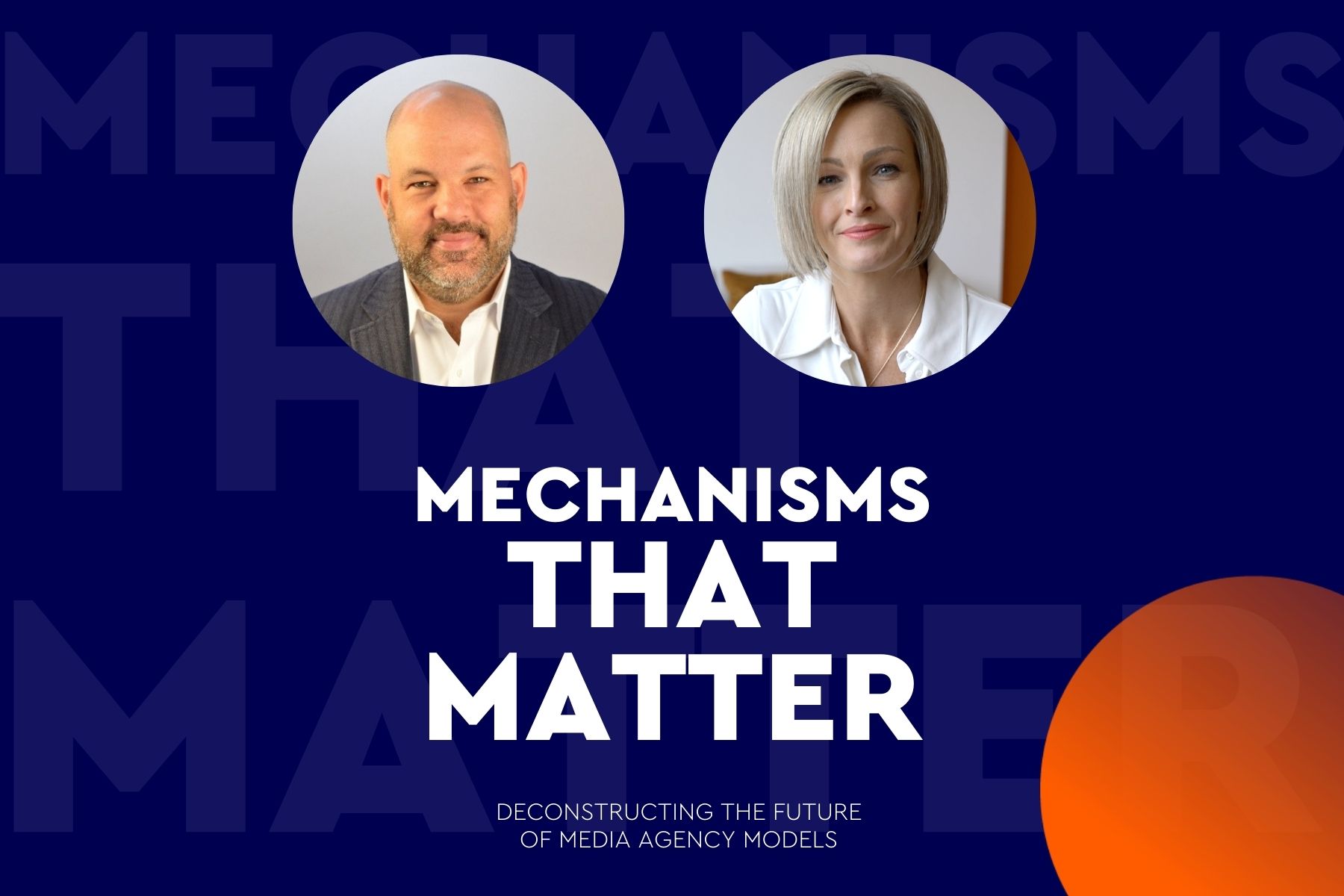
Dial up the humanity: how to strike the right tone in a crisis
Our top creative leaders share perspectives for brands
Let’s start with a certainty. Future historians will find the COVID-19 pandemic a subject of extraordinary interest. By the time they come to write about it, the pandemic itself will be over.
That much is certain. The pandemic will end.
Between now and then, there are few other certainties.
What those historians will bring to light is a frenzy of inventive human activity utterly unprecedented, in wartime or in peace. The world’s best brains conjecture, interrogate the data and confront each other with conflicting views. Leaders impose harsh limitations on their citizens; some deliver their hoped-for effects and some do not.
Remarkably, every single one of the world’s seven and a half billion people is affected. Most will be mildly inconvenienced. Many will fall ill and then recover. Some will die.
The sheer universality of this impending threat demolishes barriers. Knowledge, discovery, ideas and hypotheses are open to all. It takes a common enemy to unify a world of seven and a half billion people.
There has never been a more concerted or better-funded application of the planet’s best brains to the containment of a single specific threat. Modern communications enable the world to share information and insight more quickly and more efficiently than would have been possible even 20 years ago.
Expect periodic disappointments. They are inevitable. There will be false hope. We need to take advice even when we think it makes little sense. Patience, tolerance, empathy and good humour will all be called upon as never before.
WPP is a partner to brands large and small. During an unprecedented challenge like COVID-19, all have the same question: How do I communicate with people right now? Even more fundamentally, should I communicate with people right now – do they want to hear from me?
In short, yes. Research from Benenson Strategy Group reveals that more than 60% of American adults believe that it is very important for companies to use their voice in this crisis.
We asked several of our creative leaders across WPP agencies what advice they have for brands.
| Hugo Veiga, Diego Machado and Peter Lund, Chief Creative Officers, AKQA: |
|---|
|
In moments of global uncertainty from the spread of a common threat, with governments struggling to solve the enormous health and social challenges, companies need to step up with all of their power and influence. This is not a moment for business, but for kindness. A moment to put communication budget, production capacity and logistical reach in the service of society. But on a deeper and more human level, this is also a moment for empathy. With a huge workforce at home, companies need to work more closely than ever. If some colleagues can’t create a home office, let it just be a home. Give them the time to take care of the family. For the ones that can keep working in a home environment, understand that productivity will be affected. Everyone is adapting to this new way of working and there’s a dark cloud hanging over everyone’s head. We’re living in times that demand unity, compassion and strength. Humanity, at its best. It’s unbeatable. |
| John Patroulis, Worldwide Chief Creative Officer, Grey: |
|
“When I was a boy and I would see scary things in the news, my mother would say to me, ‘Look for the helpers. You will always find people who are helping’. ” – Fred Rogers In the vernacular of Mr Rogers, we’re in an extremely scary time right now. Everyone on the planet is seeing, hearing and reading terrifying things – and imagining even worse. And as a result, we’re having the most basic of human responses. We’re looking for the helpers. In our leaders. Our communities. Our families. And increasingly, our brands. So, at this time, the best thing to do as a brand is the same as the best thing to do as a human being – find a way to help. Your customers, your communities, your own people. Genuinely helping erases any concern about finding the right strategy, tone or action because 1. it’s the right thing to do, which is always the right strategy, tone, or action, and 2. in doing so you will be seen, appreciated, remembered and even loved. It’s a tough time. People need you to help them survive it. In this case, literally. So, lead with your soul, let your actions and messages come from an authentic, credible, even vulnerable place of impact, and the world will feel it. Because it’s what they’ve been looking for all along. |
| Piyush Pandey, Chief Creative Officer, Worldwide, and Joe Sciarrotta, Deputy Chief Creative Officer, Worldwide, Ogilvy: |
|
What would a good friend do right now? Across the world, brands use the term “consumers”, when they talk about people. That’s the thing to remember, we are dealing with people. Deep in their hearts people are the same everywhere, and we have yet to meet a person who doesn’t need a friend. Good brands are like good friends. They are there for you in good times and in tough times. In good times, they delight you by instinctively knowing what you need and also knowing when your needs have changed. Good friends talk to you and not at you. You will never find them manipulating you. These qualities are why people trust their favourite brands just like they trust their good friends. A few things to remember for these tough times: compassion, sensitivity and care are the three pillars of friendship. Brands need to make these three pillars stronger than ever. Good friends also possess the ability to set aside personal agendas, ready to make a few sacrifices. Today, as the world struggles with a pandemic, brands should show their compassion and their sense of sacrifice. Brands owe this to their consumers. It is our duty, as people in the communications industry, to be a link between the brands and the consumers. It is our collective job to educate people and to spread courage and hope. Brands that value lives will live on for many lifetimes, just like friendships. Before you do anything in these times, ask yourself, what would a good friend do right now? |
| Debbi Vandeven, Global Chief Creative Officer, VMLY&R: |
|
In this time of uncertainty, as a brand it can be difficult to know the best way to react. But once this crisis is behind us – which it will be eventually – people will remember what you did. It could be a moment to establish trust and strengthen your brand’s connection with its customers – or exactly the opposite. In terms of tonality, the brands that are doing best are those that understand the importance of staying true to themselves. Brands that come across as opportunistic or that don’t understand their role for consumers – and how it might have changed – are the ones that could experience backlash. Evaluate (and continue to check on) current messaging. As people consume more media in their search for information and advice, is your message working in context? For brands with functional roles in this pandemic, such as Walgreens, the key is keeping a steady tone, communicating consistently and possibly providing specific assistance like making a donation to the CDC (Centers for Disease Control and Prevention). And brands like Kraft-Heinz might join in by donating to organisations like Feeding America. These choices make sense for the roles these brands filled prior to COVID-19. If a shift is in order, it needs to happen in a way that connects to your brand’s truth. For example, some brands are now manufacturing more urgently-needed items (e.g. distilleries making hand sanitiser) or revising normal messaging (e.g. Ford allowing customers to delay payments). These types of actions provide positive PR moments for brands and may even have the power to strengthen the connection with their customers for years to come. |
| Bas Korsten and Daniel Bonner, Global Co-Chief Creative Officers, Wunderman Thompson: |
|
Brands are like humans. It’s no coincidence that we talk about brands in terms of human traits: personality, character, beliefs, values, identity and tone of voice. In times of great crisis, it’s crucial for brands to let that humanity shine through even more. People have come to accept brands and advertising as part of their daily lives. Even in trying times like these, people understand that brands have a role to play. A role that goes beyond the products and commercial messages. Brands can play this important role by looking closely at who they are. What they stand for. And by dialling up their human traits: empathy, sensibility, helpfulness and humour. However, it goes beyond simply stating what you stand for. A brand has to DO something. The right behaviour beats the right words. Every time. Good examples are brands like Nestlé, Unilever, Johnson & Johnson and Coca-Cola that donate significant amounts of money and supplies for those in need. And accompany those actions with messages that feel true to their brands. But also smaller, local brands without big budgets do their part to be human. Like TM, a telco from the Philippines that cleverly reversed their existing TV ad where youngsters go out together, to urge people to stay home. Luckily, data and technology are helping us understand humanity better than ever before. They help us make brand actions more relevant, more authentic and more unique. Something which is crucial in today’s crisis. Have a look at what our team in Seattle did for a group that’s hard to convince to stay at home: the young millennials. Together with Glassnote Records they created Sofa Sets, a data-infused livestream benefit concert, that shows you in real time the impact viewers are having on the number of prevented hospital stays, ventilators freed-up and more, by staying in and tuning in. Never in our lifetime have we had better tools to be more human than ever. Never was there a bigger need for creativity. Never was there a more relevant role to play for brands. Let’s help them play it. |
published on
01 April 2020
Category
More in Communications

Rebranding cancer: how brands heal and hurt
Along with consumer brands, the ‘brand’ of condition or event influences us.

Mechanisms that Matter – Inside WPP | Ford’s revolutionary marketing model
How a process created on the factory floor over 70 years ago has transformed ops for the auto giant

How to build your brand in-game
A new research report from WPP and SuperAwesome

